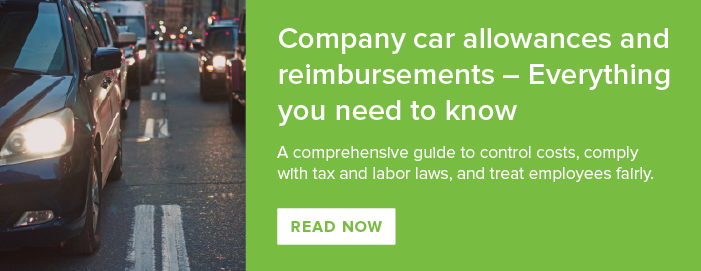In times of rising vehicle costs, organizations that pay a car allowance feel pressure to either increase the allowance or to pay directly for fuel. However, there are more cost-effective ways to protect employees' income from rising vehicle costs.
Why give employees a gas card or fuel reimbursement?
Employees who drive a personal vehicle for work are experiencing higher vehicle costs than ever. The prices of new and used vehicles remain historically high. Auto insurance premiums have risen 38% over the past four years. The costs of maintenance and repairs have increased 25% during the same period. Gas prices remain stuck in the $3–$4/gallon range.
Our inflationary economy is pressuring American workers in many other areas of expense as well. If your organization pays employees a car allowance, adding a gas card would be a huge benefit to employees in a time when everything is getting more expensive.
Giving employees a gas card is generous and convenient. It’s also foolish. You may quiet complaints and demonstrate a desire to treat employees equitably. But rather than solving the true problem – the car allowance itself – you create a new set of problems.
3 reasons not to give employees a fuel card
Fundamentally, a gas card limits your ability to control costs. Let's look at three contributing factors that illustrate this problem.
1. Gas card costs are subject to a vehicle’s fuel economy.
An employee’s choice in personal vehicle lies outside your control. If an employee chooses to drive a large pickup or SUV, you will be subsidizing their fuel costs. A gas card removes any incentive for the employee to use a fuel-efficient vehicle for work purposes. This exposes your bottom line to expenses that contribute nothing to your organization’s mission.
2. Personal use of fuel eludes visibility and adds costs.
When an employee drives a personal vehicle for company purposes, it becomes difficult to separate business use from personal use. Say an employee runs a quick errand between stops, or picks up the kids from school after work, or takes a weekend trip using the remnants of gas purchased with the fuel card. And, yes, gas cards are taxable unless you can prove business use of each purchase.
3. Employees control the gas card; you don't.
Employees control the fuel card and your costs based on how they report business use vs. personal use. Because a lot of companies rely on the honor system, business use may be over-reported. You can regain some control by placing limits on daily, weekly, or monthly transactions. However, such limits still leave two problems: employees with high fuel costs may remain under-reimbursed and employees with lower fuel costs may spend up to the maximum by over-reporting business use.
Alternatives to gas cards or fuel reimbursement
If you currently provide a standard car allowance, adding a gas card or fuel reimbursement will require adding a mileage tracker to substantiate business use. You will now have a complicated business vehicle policy instead of the simple monthly allowance. Here are some better options:
1. Pay for employees' gas with a non-taxable allowance.
Around 40% of a standard car allowance goes to federal and state taxes. Switching to a non-taxable plan recoups that money and reinvests it in the company's workers.
Don't non-taxable plans involve administrative complexities in order to meet IRS rules? Yes, but you are already looking at increased administrative complexity with the addition of a gas card. A non-taxable allowance will boost your employees' pay while reining in overall costs.
2. Adopt an adjustable mileage reimbursement rate.
All mileage reimbursement rates up to and equal to the IRS standard business rate are considered non-taxable. These rates, however, are only responsive to rapid changes in gas prices months after the fact.
The proper way to adopt a non-taxable AND adjustable rate is to adopt a fixed and variable rate car allowance. This approach pays a fixed monthly amount for employees' fixed costs (like insurance and depreciation) and an adjustable mileage rate for employees' variable costs (like gas, oil, and maintenance).
Also known as a FAVR reimbursement plan, this approach is the most cost-effective alternative to both standard car allowances and mileage rates.
3. Use an accurate, transparent mileage tracker.
Whatever approach you take, your employees need to use a mileage tracker that reduces their ability to accidentally or deliberately over-report business mileage. The level of transparency needed here can create worries about privacy.
That's why we recommend mLog, a mobile app that provides visibility into business travel while protecting employees' privacy.
To learn more about these cost-effective strategies to combat high gas prices, schedule a call with mBurse. Or read our longer guide below.


